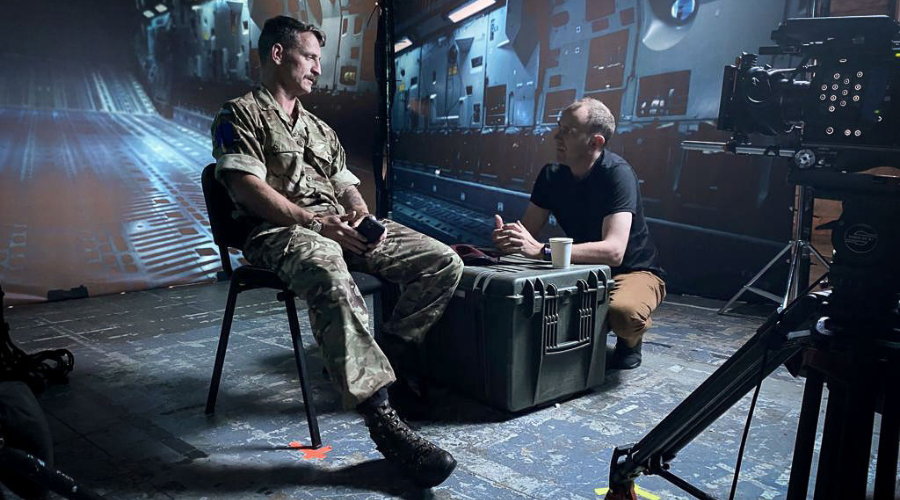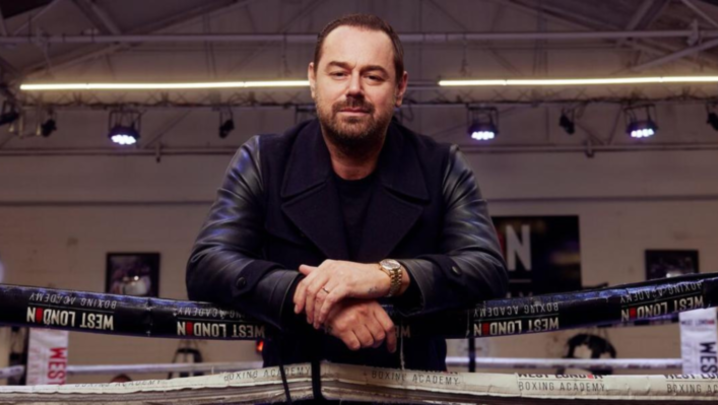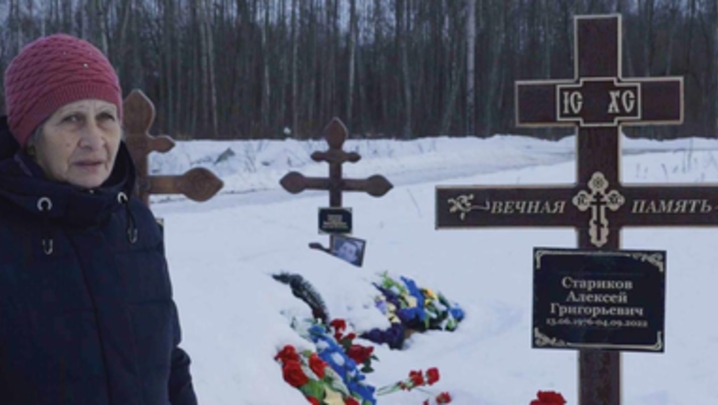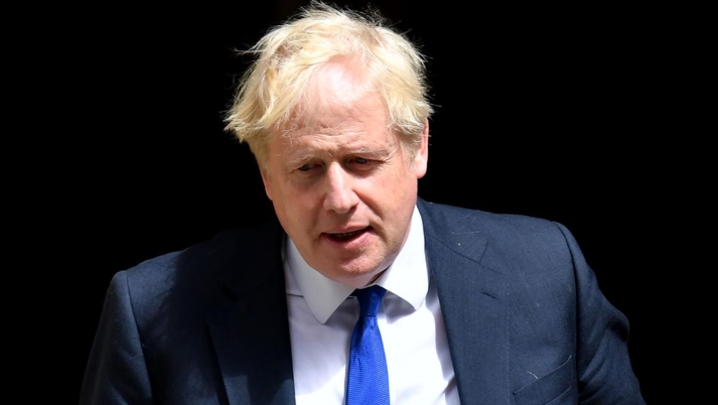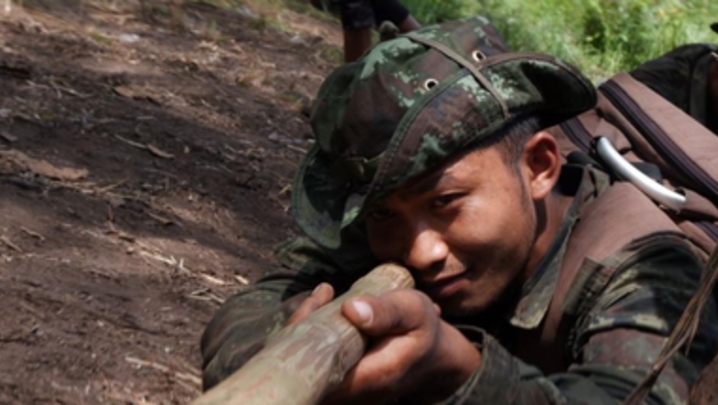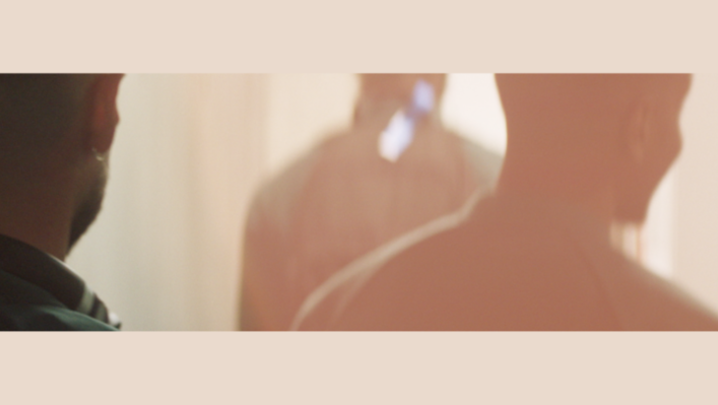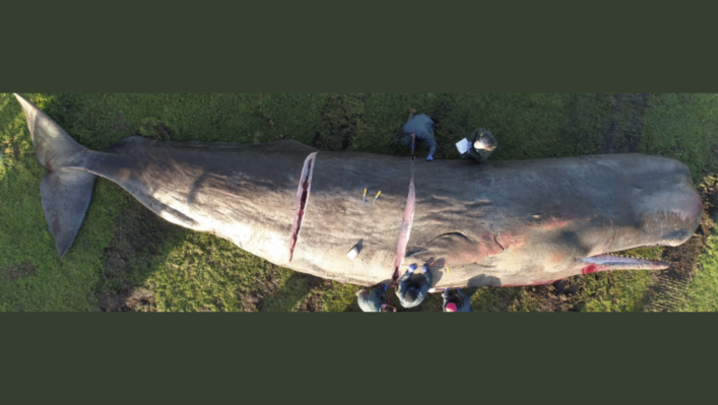Amid the crowd of thousands breaching the barriers surrounding Kabul International Airport, all hellbent on boarding a plane, any part of a plane, that would evacuate them from their fallen city, a young Afghan man pauses for a selfie as an American C-17 transporter blasts off overhead.
It's the combination of such raw, immediate footage, and the completely candid testimonies of civilians and soldiers, that makes James W Newton's documentary on the Taliban's capture of Kabul in 2021, Evacuation, so indelible.
We don't hear from the politicians responsible for the lack of planning for the UK's biggest airlift since World War II, let alone the 20 years of questionable foreign policy leading up to it. Instead, having gained unprecedented access to the Ministry of Defence (MOD), Newton takes the simple but powerful approach of allowing its personnel to process their emotions on camera.
His hope was that, by making painfully clear the emotional toll on everyone involved, that "it would hold the system to account."
He's been proven right. As well as garnering unanimous critical acclaim, the documentary has reignited condemnation of the UK government's chaotic withdrawal strategy.
We spoke to Newton about how it all came together.
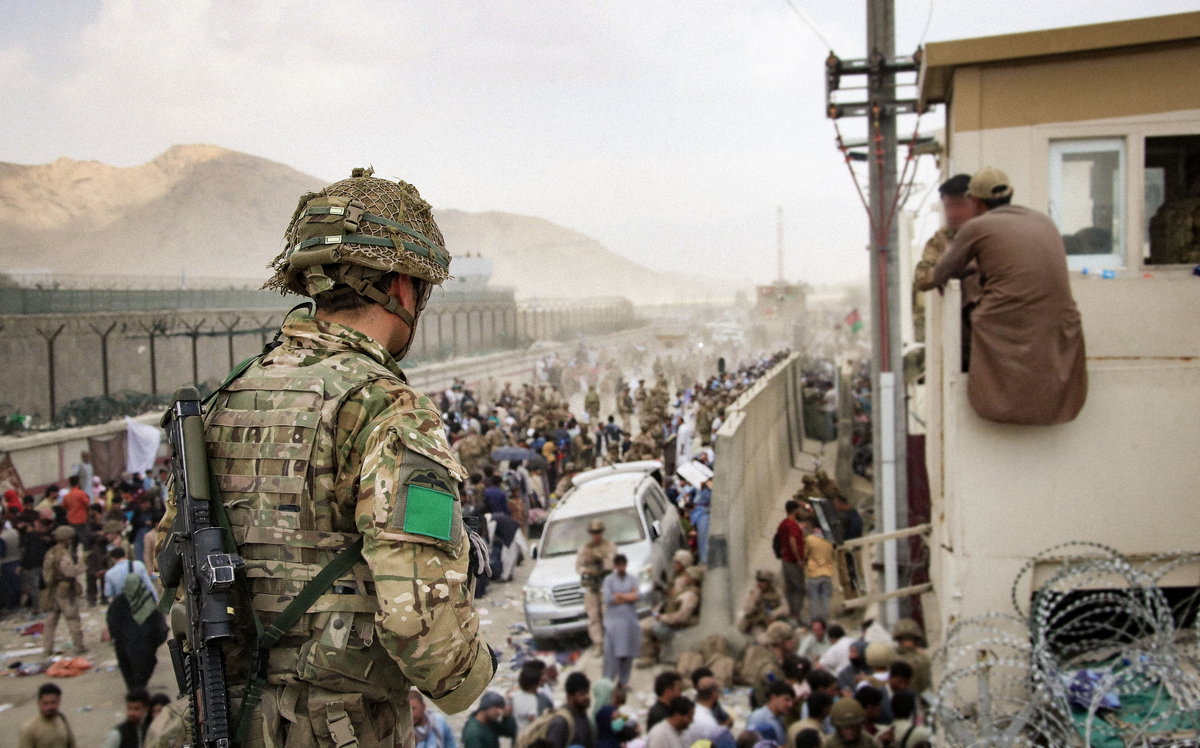
Sourcing the unseen
Newton recognised that to immerse viewers in a familiar story he would need plenty of footage, and ideally some that hadn't been seen before. Together with archive producers and first-time researcher Shabnam Karimzada (who he recalls meeting serendipitously in a McDonalds), they sifted through every scrap of film they could find: news reels, mobile phone videos, social media, satellite feeds.
The result is an assemblage of images that sear into your memory. For one, the sequence that bookends the first episode. On grainy phone cameras, we see the aforementioned American C-17 accelerating for take-off with over 20 Afghan men clinging to an outward flare on its fuselage, and when it reaches a few hundred feet, they start plummeting to the tarmac. It's a harrowing echo of the sight of bodies falling from the World Trade Centre, in the 9/11 terrorist attacks which first triggered the invasion all those years ago.
There was, however, some footage they judged too horrifying to include. "We had to constantly make decisions about where to draw the lines, and you keep shifting them because you want the audience to be able to engage, but you don't want them to be so shocked that they turn it off, or have to live with it in a way that's traumatising."
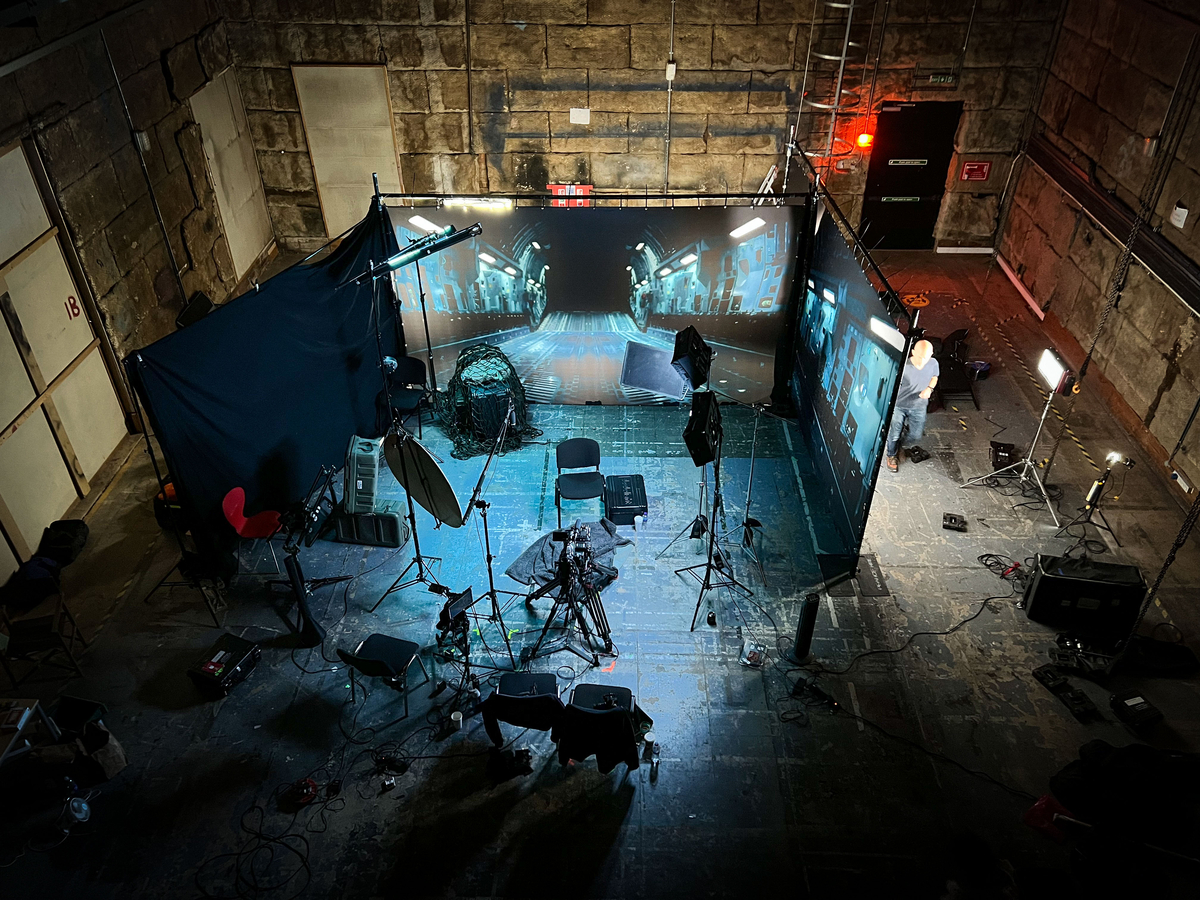
Building a safe space
Visually, Newton contrasts Evacuation's interviews with those of Once Upon A Time in Iraq (BBC One, 2020), which saw soldiers, civilians and journalists tell their stories of the Iraq war in a darkened, almost atemporal studio, the rig of which they made visible.
With his own series, Newton wanted to "take the audience to the place and leave them there." His initial idea was to film the interviews in a C-17 at RAF Brize Norton, the very aircraft used in the evacuation. But they quickly found that doing the interviews "in a hostile grey box, in the middle of summer, and in the middle of an airfield with F-16s constantly taking off [in high demand due to the Ukraine war], wasn't going to work."
The budget allowed for neither a set build nor a green screen, so he took a page out of the drama director's playbook: printing 16 foot by 9-foot canvasses of a C-17, taking them to a soundstage in Twickenham Film Studios, and backlighting them to life. "It meant that we could create this calm, dark, peaceful environment where people could just come and sit and chat."
Testament to the safety of the space was a certain voice in the series that rose above the rest: that of Sepehr, the young articulate son of Burhan, an Afghan interpreter who managed to escape. "I really wanted kids in the film," says Newton, "because kids were caught up in the evacuation, and they have an amazing perspective on life.
"But the idea of putting young children on camera and getting them to talk about something as horrific as this feels very risky, so there was no guarantee that we would be interviewing his son."
However, just off camera they set up a colouring area for the children of interviewees, and quite naturally, over the course of Burhan's conversation, Sepehr would "pop up onto the bench and start talking."
His profoundly innocent reflections make for some of the most devastating, be it his bafflement as to why they weren't being allowed to leave Kabul, or his newfound happiness at relocating to a house "next to an Aldi."
Scoring survival
Setting what Newton refers to as the "thriller vibes" of his documentary was Vincent Watt's propulsive score, which is made all the more impressive when Newton explains that, to avoid having to rush the composition-to-picture come the end, Watts composed it blind.
Newton would simply describe each beat of the story, such as 'the countdown to the suicide bomb' [episode three documents the Isis-K suicide bomb that killed 183 people in the queue for evacuation], and Watts would compose to that. "And what came back was incredibly rich, and actually acted as a storytelling device because the editors would start cutting with it."
The result, reckons Newton, is a score that "really got under the skin of the drama of that experience, and the tension of not knowing whether you're going to survive or not."
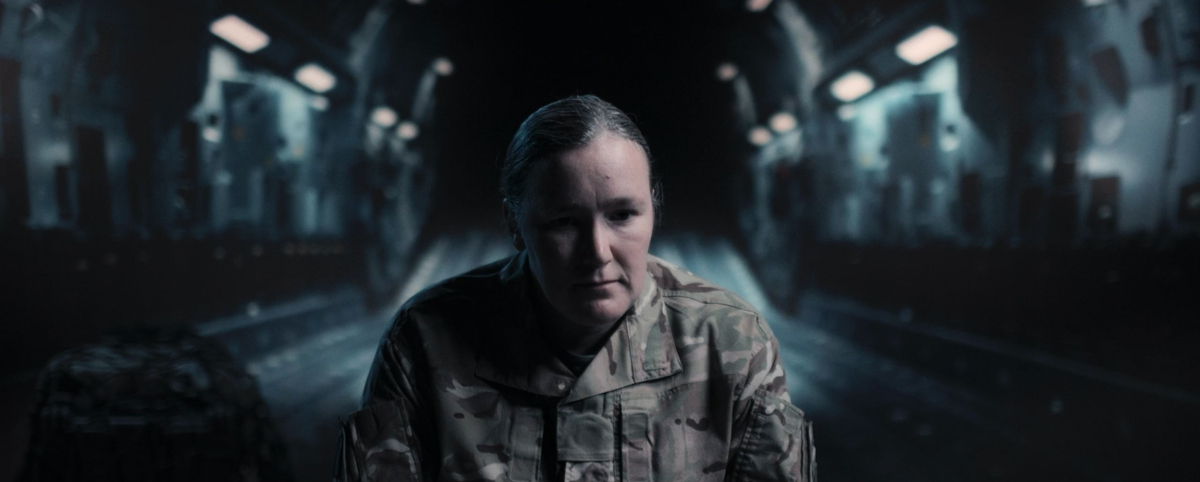
Enlisting the MOD
There was an official bidding process for the MOD's perspective (which included the Combat Camera Team's official footage), given the institution’s natural hesitancy to divulge state secrets. But Newton also believes they were apprehensive about revealing the emotional impact on their personnel. "It's important, I guess, for an institution like them to be seen to have a degree of resilience. But I think the way in which they ordinarily show resilience doesn't allow people to see their humanity. And actually, I think there is real resilience in showing that vulnerability."
Indeed, upon seeing how deeply affected the soldiers are by their actions—however much they were forced to compromise and make arbitrary decisions over the lives of innocent Afghans—your admiration for their integrity and courage only grows. At one point in her interview, Diana Bird, a Royal Air Force Police squadron leader who played a vital role in the logistics at the airport, even reaches under her chair for what she calls her "PTSD rock", which grounds her whenever she is "taken back there" by a traumatic memory.
The harsh truth is that "there is a mental health crisis that follows any war", says Newton. "You're putting people into trauma, and you can't go through traumatic situations and not be affected." He acknowledges that there are protocols put in place by the MOD, including therapy, "but does that mean that everyone takes it up? Does that mean that people aren't struggling long term?"
Newton was therefore aware of the huge responsibility they had in handling such emotive material. Not just out of concern for the over 2000 soldiers involved in the evacuation, but also the veterans who might now be questioning their service in the 20 year-long, ultimately futile invasion. "We knew we were going to trigger a lot of difficult feelings in people, and that's not always a good or bad thing either, it just is." He hoped, however, that some healing would come through facing those feelings.
Before the series aired, they held exclusive viewings at several army barracks, and Newton vividly remembers one at RAF Brize Norton for some 200 plus aviators. "There was a lot of emotion being released. People were breaking down, some were crying, someone walked out at the end of a film, some were getting angry. It was bringing back everything.
"Someone came up to me at the end and said, 'look, this is an incredible thing, because no one has captured the emotional content of our experience yet. Yes, there have been documents and papers and reviews and debriefs, but no one has plugged into how we feel."
Evacuation is available now on Channel 4.

